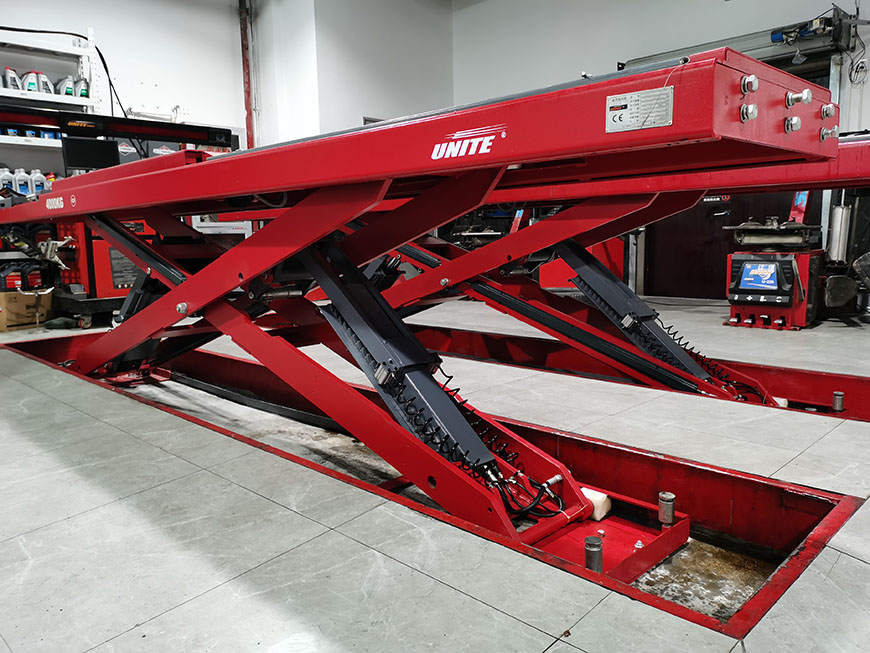Scissor lifts are versatile and indispensable pieces of equipment used in various industries, from construction and maintenance to warehousing and manufacturing. They provide a safe and efficient way to elevate workers and materials to different heights. However, understanding the weight of a scissor lift is essential for several reasons. In this post, we will delve into the factors that influence the weight of scissor lifts, the different types available, and the importance of weight considerations in ensuring safe and productive operations.
1. Factors Affecting the Weight of Scissor Lifts
Several factors contribute to the overall weight of a scissor lift:
a. Size and Platform Capacity: The size of the scissor lift platform and its weight capacity play a significant role in determining the overall weight of the machine. Smaller scissor lifts with lower weight capacities are generally lighter than larger, heavy-duty models.
b. Construction Materials: The materials used in the manufacturing of scissor lifts can influence their weight. For instance, scissor lifts made from steel tend to be heavier than those constructed using aluminum, which offers a lighter yet robust alternative.
c. Power Source: Scissor lifts can be powered by electricity, diesel, or other fuel sources. Electric scissor lifts are often lighter compared to their diesel counterparts due to the absence of a heavy engine and fuel tank.
d. Additional Features: Some scissor lifts may come equipped with additional features such as extended platforms, outriggers, or attachments, which can add to the overall weight of the machine.
2. Types of Scissor Lifts and Their Weight Ranges
Scissor lifts come in various types, each designed to cater to specific applications. Here are some common types of scissor lifts and their weight ranges:
a. Small Electric Scissor Lifts: These compact lifts are ideal for indoor use, especially in tight spaces. They typically weigh between 1,500 to 3,000 pounds (680 to 1,361 kilograms).
b. Medium-sized Scissor Lifts: Suited for both indoor and outdoor use, these lifts have a higher weight capacity. Their weight ranges from 3,000 to 7,000 pounds (1,361 to 3,175 kilograms).
c. Large Rough Terrain Scissor Lifts: Built for outdoor applications on uneven surfaces, these heavy-duty lifts can weigh between 7,000 to 10,000 pounds (3,175 to 4,536 kilograms).
d. Heavy-duty Industrial Scissor Lifts: These robust lifts are designed for heavy-duty tasks and can weigh over 10,000 pounds (4,536 kilograms).
3. Importance of Weight Considerations
Understanding the weight of a scissor lift is crucial for various reasons:
a. Transport and Storage: Knowing the weight of a scissor lift is essential for transportation and storage planning. Overloading vehicles or structures can result in accidents and damage to property.
b. Job Site Requirements: Different job sites may have weight restrictions or limitations, particularly in areas with delicate flooring or structures. Being aware of the scissor lift’s weight ensures compliance with site regulations.
c. Operator Safety: Proper weight considerations contribute to the safety of operators and other personnel using or working near the scissor lift. Operating the lift within its weight capacity prevents instability and tipping hazards.
d. Equipment Longevity: Exceeding weight limits can put unnecessary strain on the scissor lift’s components, potentially leading to premature wear and tear and increased maintenance costs.
Knowing how much a scissor lift weighs is crucial for safe and efficient operations. The weight of a scissor lift is influenced by various factors, including size, construction materials, power source, and additional features. By understanding the weight considerations and selecting the appropriate type of scissor lift for a particular job, operators can ensure a safer working environment, extend the equipment’s longevity, and enhance overall productivity on the job site. Always refer to the manufacturer’s guidelines and specifications for weight-related information to ensure the proper and safe use of scissor lifts in various applications.

